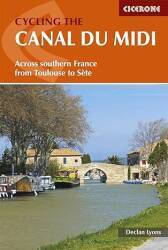
Canal du Midi
Le Somail to La Redorte
| 27.0 | kilometers |
| 7 | locks |
| 19.61 m | elevation gain |
After breakfast on board, and topping off our water tank
from the town hose, we continued
onward from Le Somail.
About halfway into this day's 27 kilometers of travel
we started encountering locks again.
It was a beautiful sunny day.
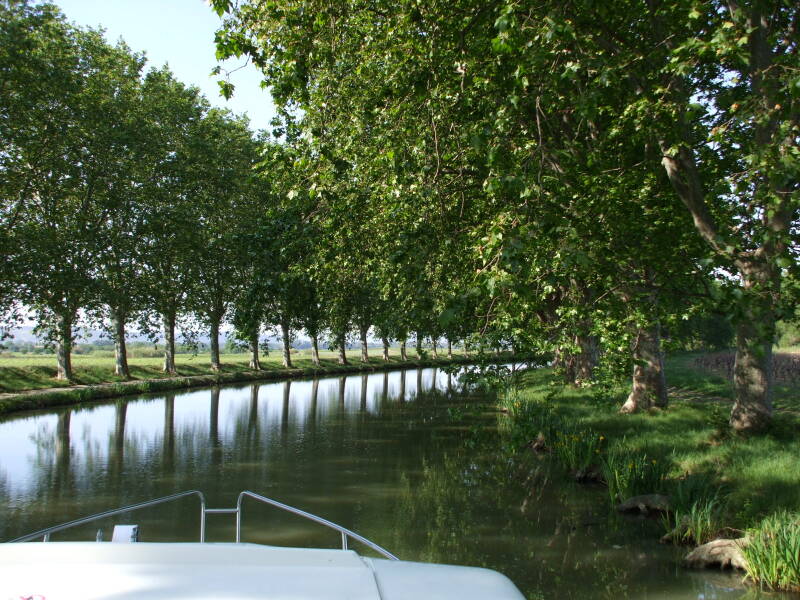

Looking south, we saw the foothills of the Pyrennes chain of mountains separating France and Spain.


Ventenac-en-Minervois
More onVentenac-en-Minervois
After just five kilometers we arrived in Ventenac-en-Minervois.
Ventenac from the Latin man's name.
Minervois from the Roman goddess Minerva, the goddess of wisdom and strategic defensive warfare, the sponsor of arts, trade, and strategy. She's the Roman version of the original Greek Αθηνά or Athena.
We have tied up at the town's large stone quay. We will explore the town, including the wine operation in the large fortified building.
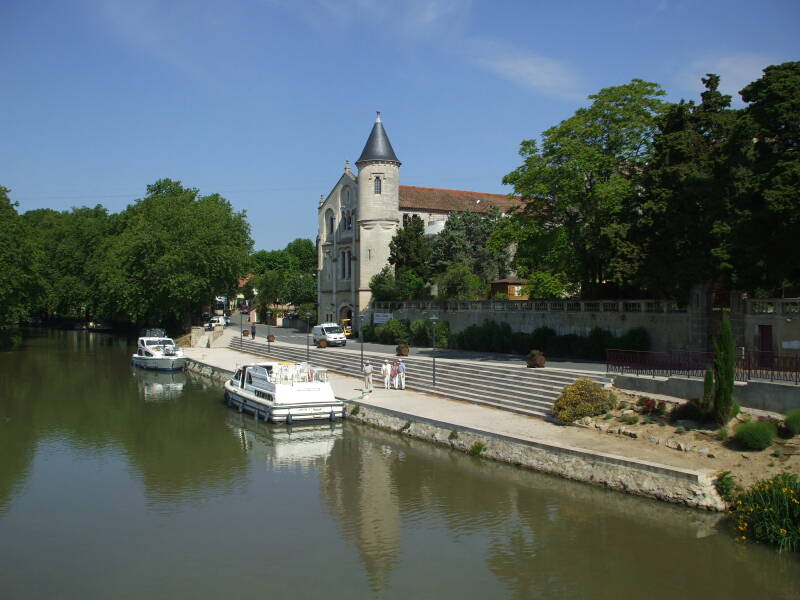
Minervois is now an AOC, an appellation d'origine contrôlée, a certification of the geographic origin of an agricultural product. The red Minervois wines are made from Syrah and Mourvedre (minimum 20%); Syrah, Mourvèdre, Grenache and Lladoner Pelut (minimum 60%); and Carignan, Cinsault, Terret, and Aspiran (maximum 40%).
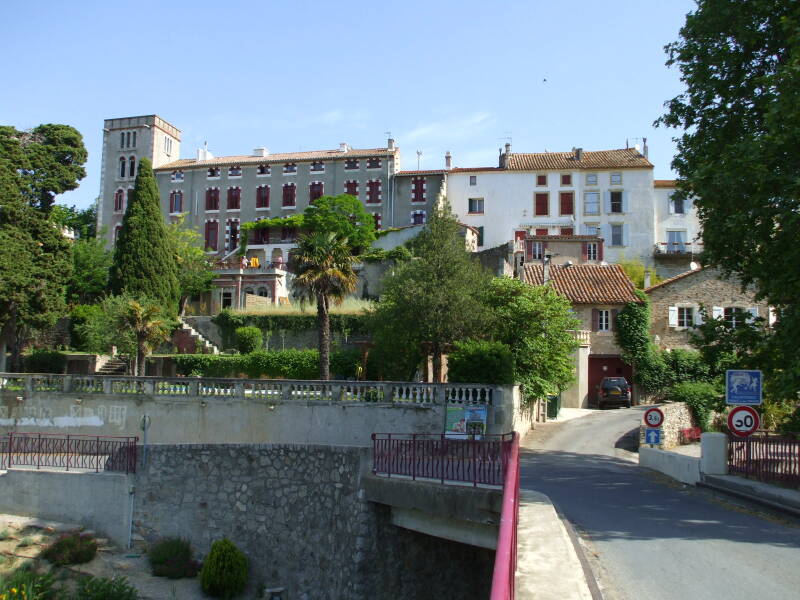

Phylloxeridae is a small family of insects which are parasites to plants. One of the species, Dactylosphaera vitifoliae or "grape phylloxera" is a pest of grapevines. It was originally native to eastern North America, but now is found worldwide.
Phylloxera feed on the roots and leaves of grapevines during different stages of their complex life cycle. They were brought to England in the 1850s by botanists collecting specimens of American vines. They first appeared in the southern Rhône valley in France in 1863. By the end of the 19th century 70–90% of European vineyards had been destroyed. American grape varieties more resistant to phylloxera were then planted throughout France. This area was mostly planted in Sauvignon blanc.
The long-term solution has been to graft European vines onto American rootstock resistant or at least tolerant to phylloxera.
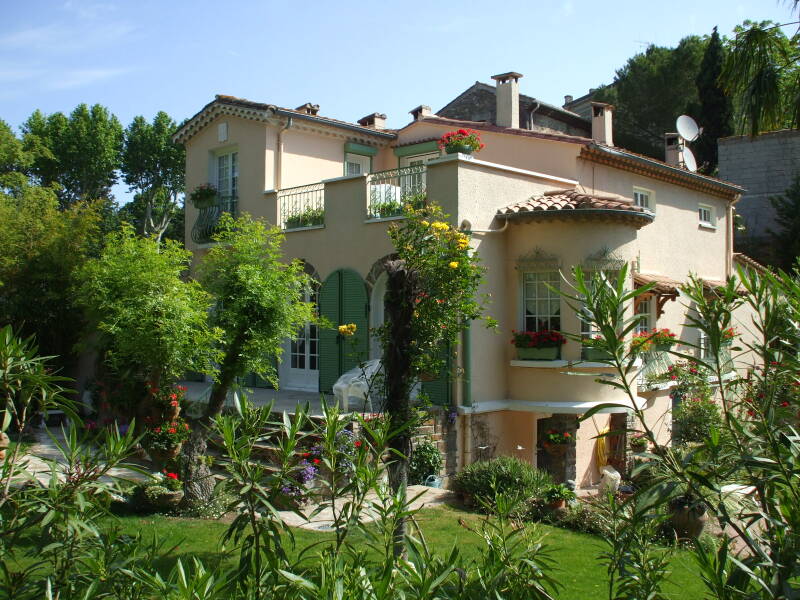
However, in the early 1900s the phylloxera crisis was still underway. The Île-de-France region surrounding Paris had no surviving vineyards. A three-part solution was devised:
- Import wine from Algeria and Tunisia, then
- Blend the North African wine with the mediocre wine being produced in Southern France, and
- Distribute the resulting wine throughout France by rail.
France began importing large quantities of Algerian and Tunisian wine through the port of Sète, at the east end of the Canal du Midi.
This led to overproduction in Languedoc, leading to depressed prices and making things worse, not better, for the local winemakers.
The Languedoc winegrowers revolted in March 1907, in what was called "The Revolt of the Beggars" because of their economic state. They formed the Viticultural Defense Committee, and a large group of them marched to Narbonne to have heated discussions with a parliamentary committee. There was even an anthem of the beggars' revolt, La Vigneronne.
A fourth step was added to solve the problem of overproduction leading to low prices:
4. Get the Army drinking wine. Lots of wine.
Army regulations stated "Water is the soldier's usual drink." It was time to change that.
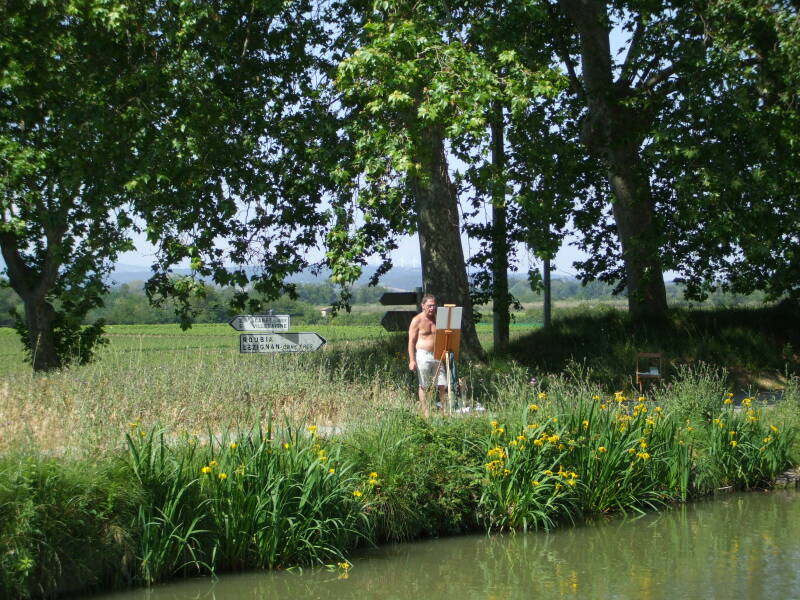
World War I began on 28 July 1914, quickly leading to the horrors of trench warfare. In October 1914, in the early stages of what obviously would be a long war with unpleasant life in the trenches for many soldiers, the French Army introduced a ration of wine.
The ration was initially Père Pinard, a notoriously mediocre wine known for tasting "too little or like nothing at all".
This was replaced with Pinard du Poilu, a rough red wine blended with low-quality wines including Maconnais, Beaujolais, and Charentes, with high-grade wines from Languedoc-Roussillon, Algeria, and Tunisia. The main goal was to reach 9% ETOH.
The initial ration was a quarter-liter daily. That was soon seen to be insufficient, for both the infantry and the winemakers, and Parliament doubled the ration to a half-liter daily in January 1916. Two years later, in January 1918, the ration was increased again to three-quarters of a liter, today's standard 750 ml bottle each day.
Below is Chateau Ventenac-en-Minervois, which was built in 1789 by the winemaking Saint-Cyran family on the ruins of a 9th century fortress. They now produce between 500,000 and 850,000 liters of wine per year, far from the 4.5 million liters they once produced.
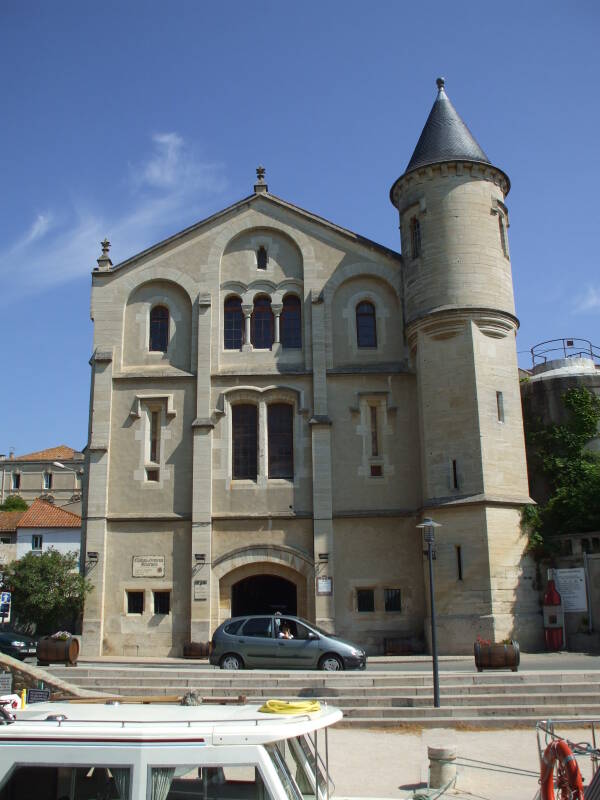
Le Pinard thus had a triple mission for France — support the morale of the troops, unify the nation, and contribute to victory in the Great War. Jean Richepin wrote after the victory at Verdun:
In peasants' glasses, as well as in chalices touched with a trembling hand, let them drink the wine of the poilus, poured out by our silent canteens and paid as dearly as possible for the benefit of widows and orphans in France.
Diggers andMehmetçikler
at Gallipoli
The poilu, literally "hairy one" for the facial hair common in the trenches, was the informal term for the French World War I infantryman. He was the French version of the British Tommy, ANZAC Digger, Ottoman Mehmetçik, and US Doughboy.
Amazon
ASIN: B082PQKLL2
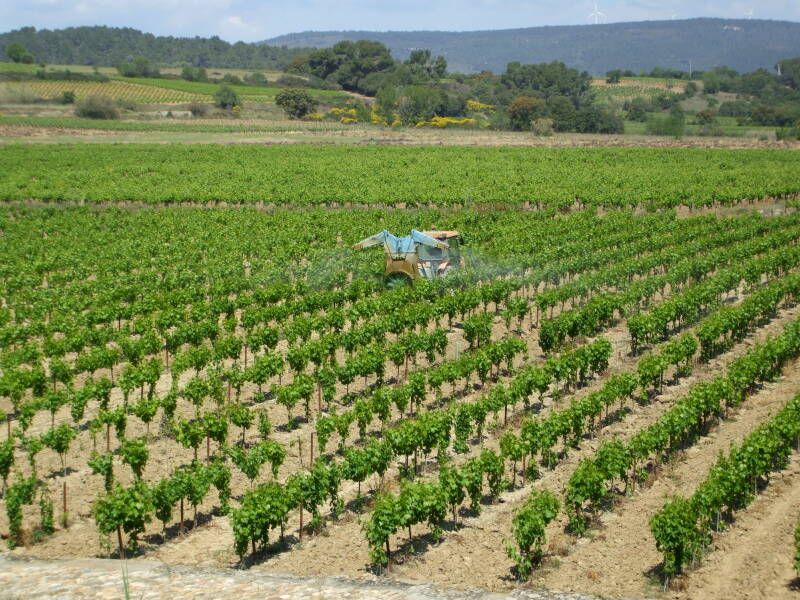
Between the world wars, in the 1930s, a cooperative movement in the Languedoc returned the local viticulture to successful operations by emphasizing quality over quantity.
Continuing Along The Canal
We continued along the canal, and reached the first lock of the day.
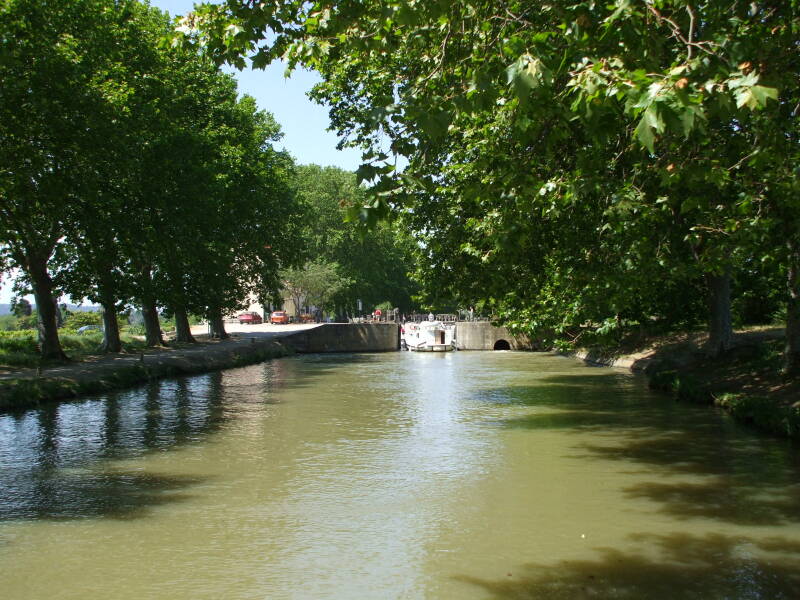

Some lock keepers offer a range of goods.
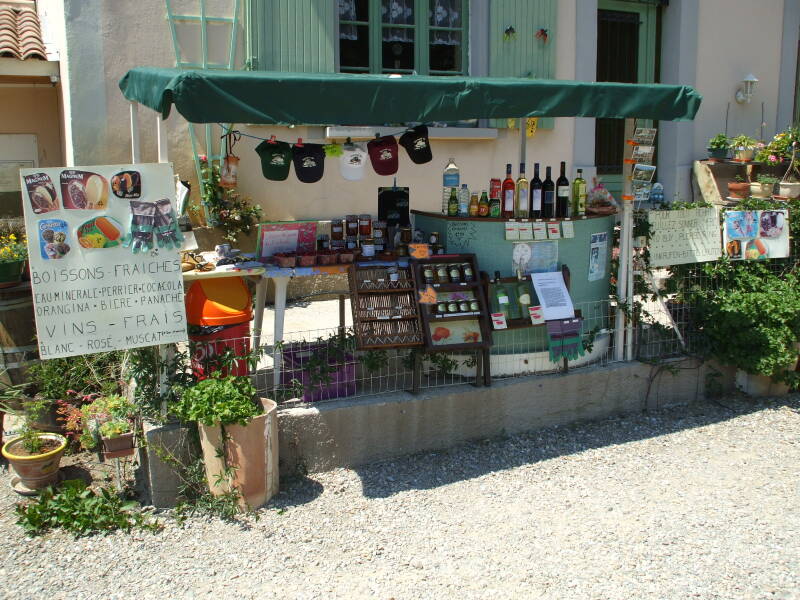
We passed through that single lock, a double lock, another double lock, and then two single locks.
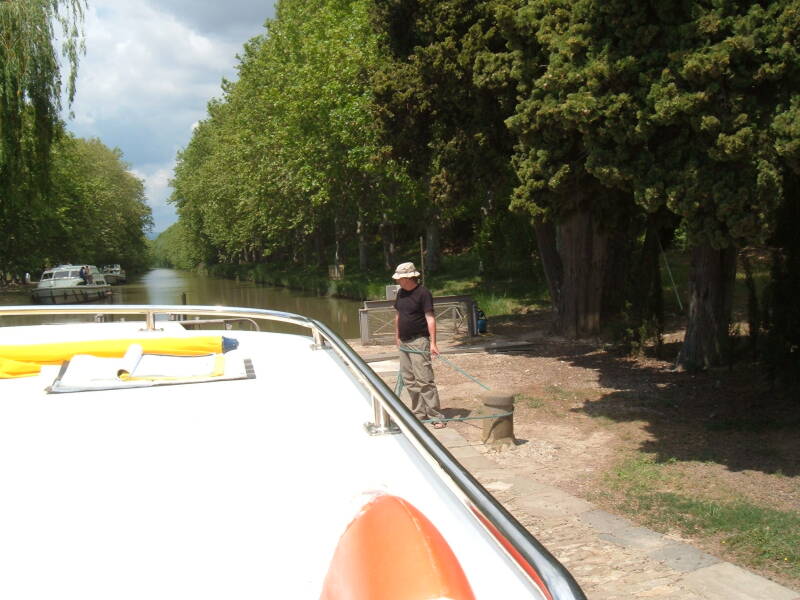
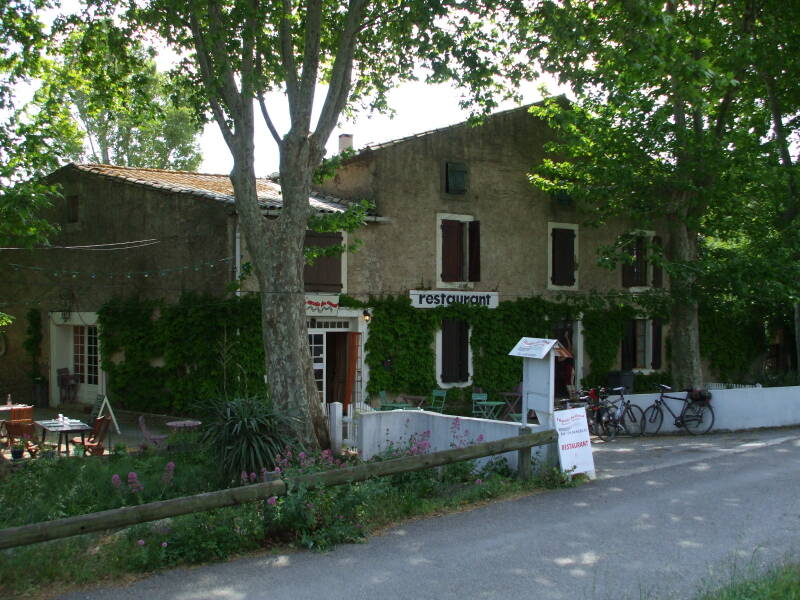
By the end of the day those seven locks had lifted us through another 19.61 meters in elevation.


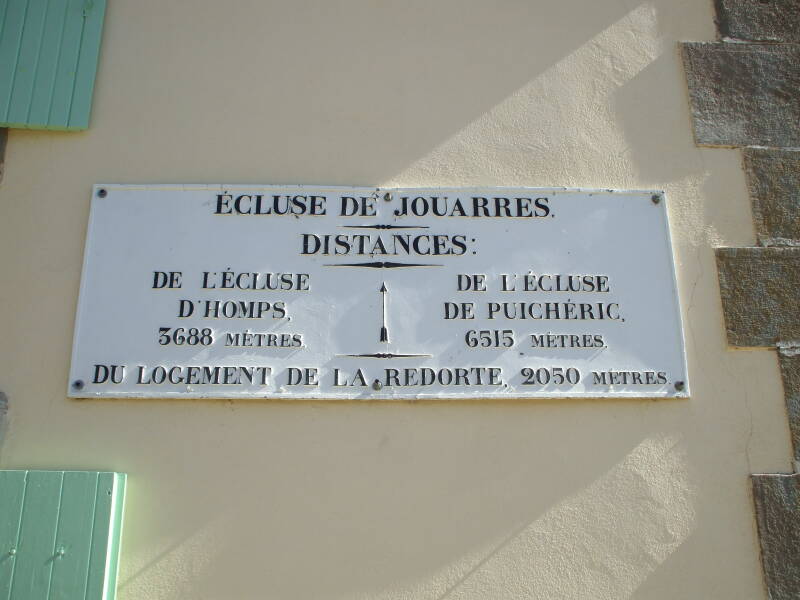
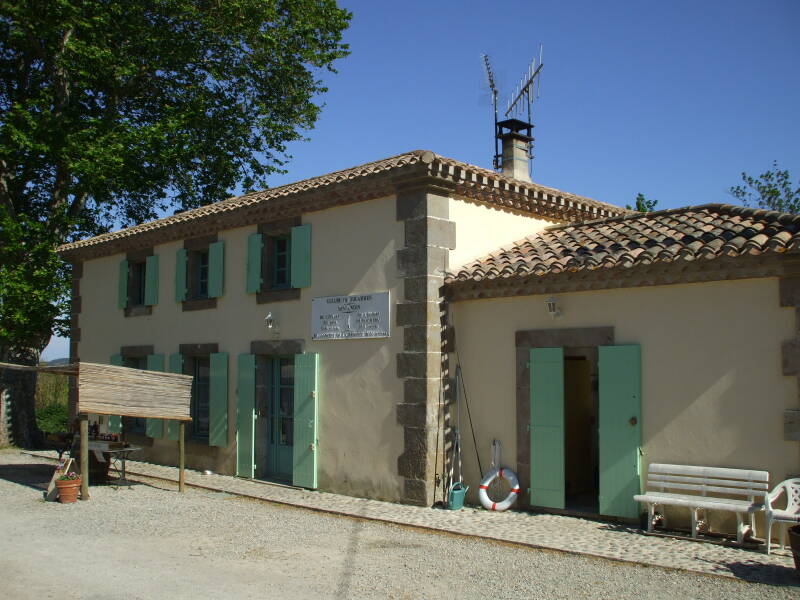
La Redorte
More onLa Redorte
La Redorte was once under the control of the fortress city of Carcassonne, which we will visit in two day's time.
Businesses in La Redorte began thriving with the opening of the Canal du Midi. Below is a postcard showing freight operations around 1900. The location is close to where we tied up for the night.
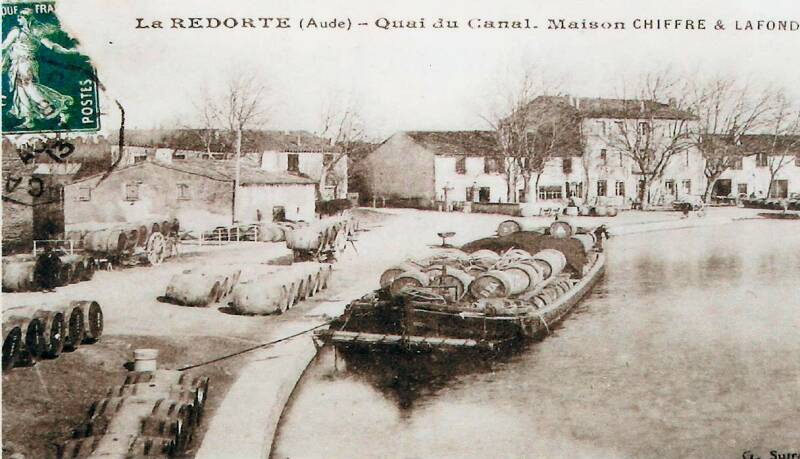
The trip shown on these pages took place in 2008. After that, a print of the below picture was always displayed on my parents' refrigerator.
Within 10 years, by the spring of 2018, my dad had developed Alzheimer's Disease and no longer knew who I was. He recognized me, vaguely, as a guy who worked where he lived. Jeeves, after a fashion.
I lived at my parents' house for 4 months, late spring through the summer of 2018, as cook and cleaner and laundry boy and errand runner. So, yes, Jeeves, but without the preternatural capability of Wodehouse's stories.
Before we finally had to move him into a long-term care facility, every few days he would say "Come with me, I want to show you something."
He would lead me to the kitchen, show me this picture, and tell me that some day I should visit France. He knew a guy named Bob who could help me plan a trip.
He would point to the people in the picture and name them. There he was in the port side hatch, then Larry and Shirley on the upper deck, then Betty at the stern. He would point to the aft cabin ports on this side and say that he and Betty had a cabin there (True). Larry and Shirley had a similar cabin on the opposite side (True). And Bob slept in the small forward cabin up there at the bow (Also true).
I tried, several times, to explain that I was Bob. That I had taken that picture. That I was there on that trip, and two other canal boat trips. That I wasn't in this picture because I took it from the opposite bank of the canal. But no, I was the guy who worked where he lived, and Bob lived somewhere far away and knew about France.
Bob finds it confusing to be involved in a conversation in which he is talked about in the third person. Bob eventually gave up on trying to explain.
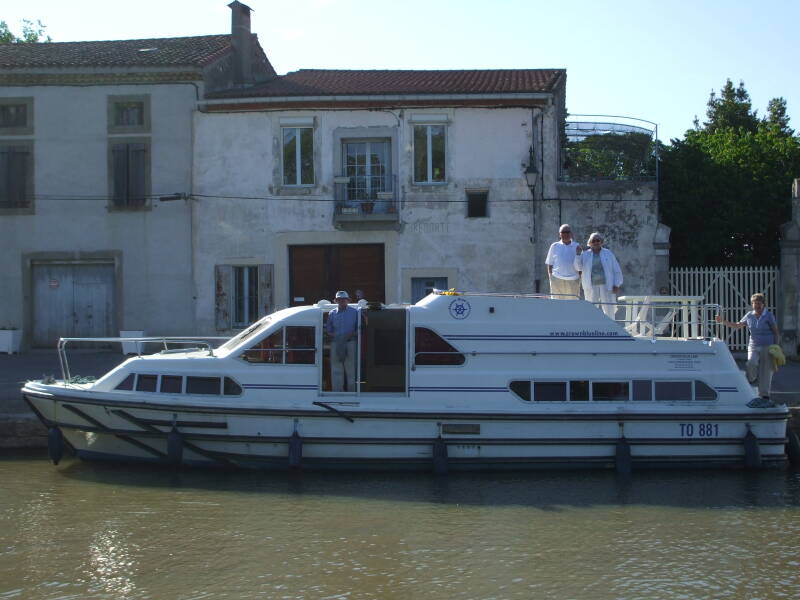
The vineyards around La Redorte produce wine of the Minervois AOC, and also the Coteaux-de-Peyriac VDP and IGP.
VDP or Vin de Pays is a denomination and not an appellation, indicating that the wine is of high quality but not of a specific origin or terroir. VDP specifies minimum alcohol content (at least 10% in le Midi), grape variety rules, limits on how many hectoliters of wine are produced per hectare, and analytic requirements for pH and sulfur dioxide content. There are multiple VDP denominations for the Languedoc-Roussillon region, for this Départment of Aude, and also those of Hérault, Gard, and Pyrénées-Orientales
IGP or Indication Géographique Protégée is an EU designation linking products to a place of production or processing, but made with ingredients not necessarily from that geographical area.
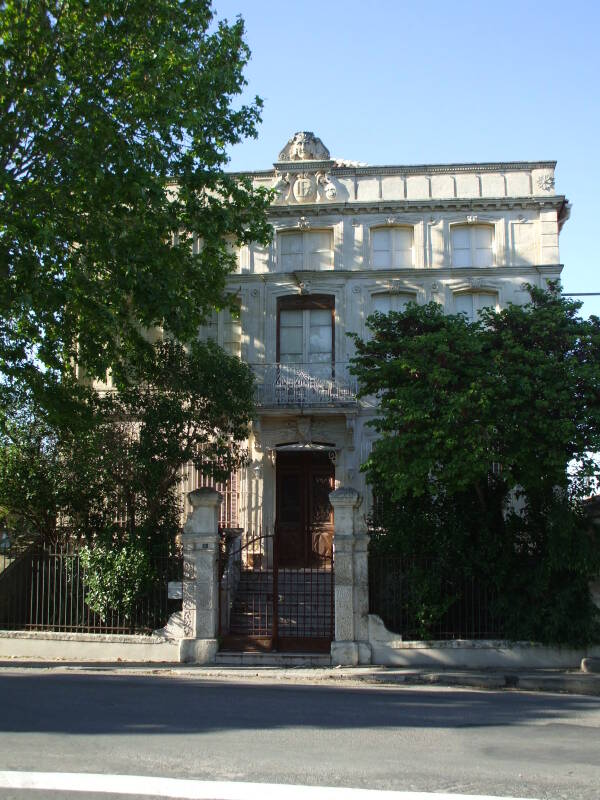
As for canal-centric sights in La Redorte, the Pont-canal du Rivassel is an aquaduct carrying the canal over the Naval stream.
Another aqueduct includes eleven arches along one side that open to the l'Argent-Double river passing below. If the volume of water entering the canal through small streams would make this segment of the canal too high, the side of this aqueduct serves as a spillway to maintain its maximum elevation. A pedestrian walkway runs across the tops of the arches.
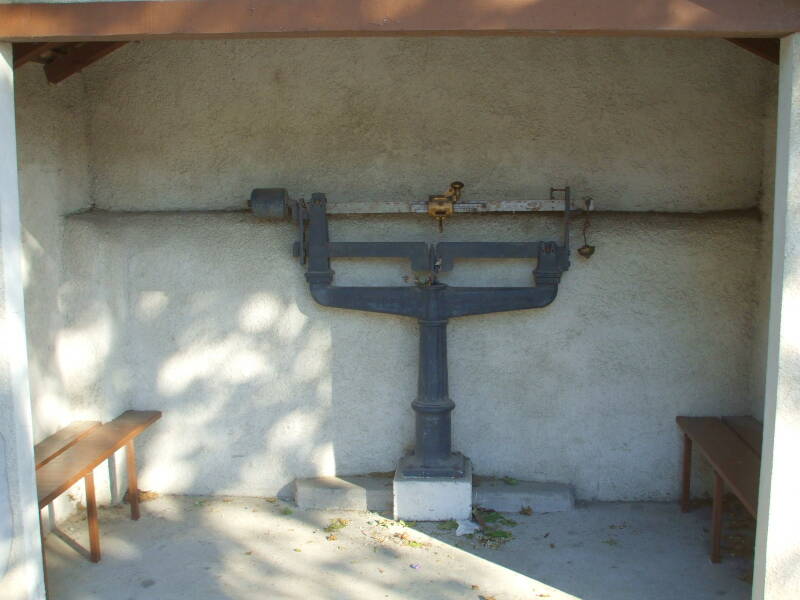
There is also a 15-tonne freight scale to weigh trucks and their cargo when transferring freight between road and canal transport.

The town has a post office, of course.

And a nice school.
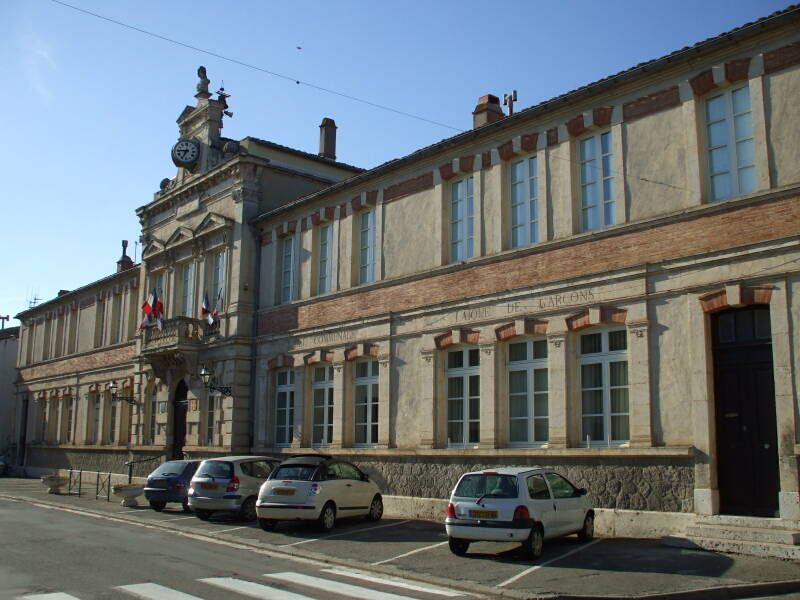
The next day we will continue to Trèbes.
